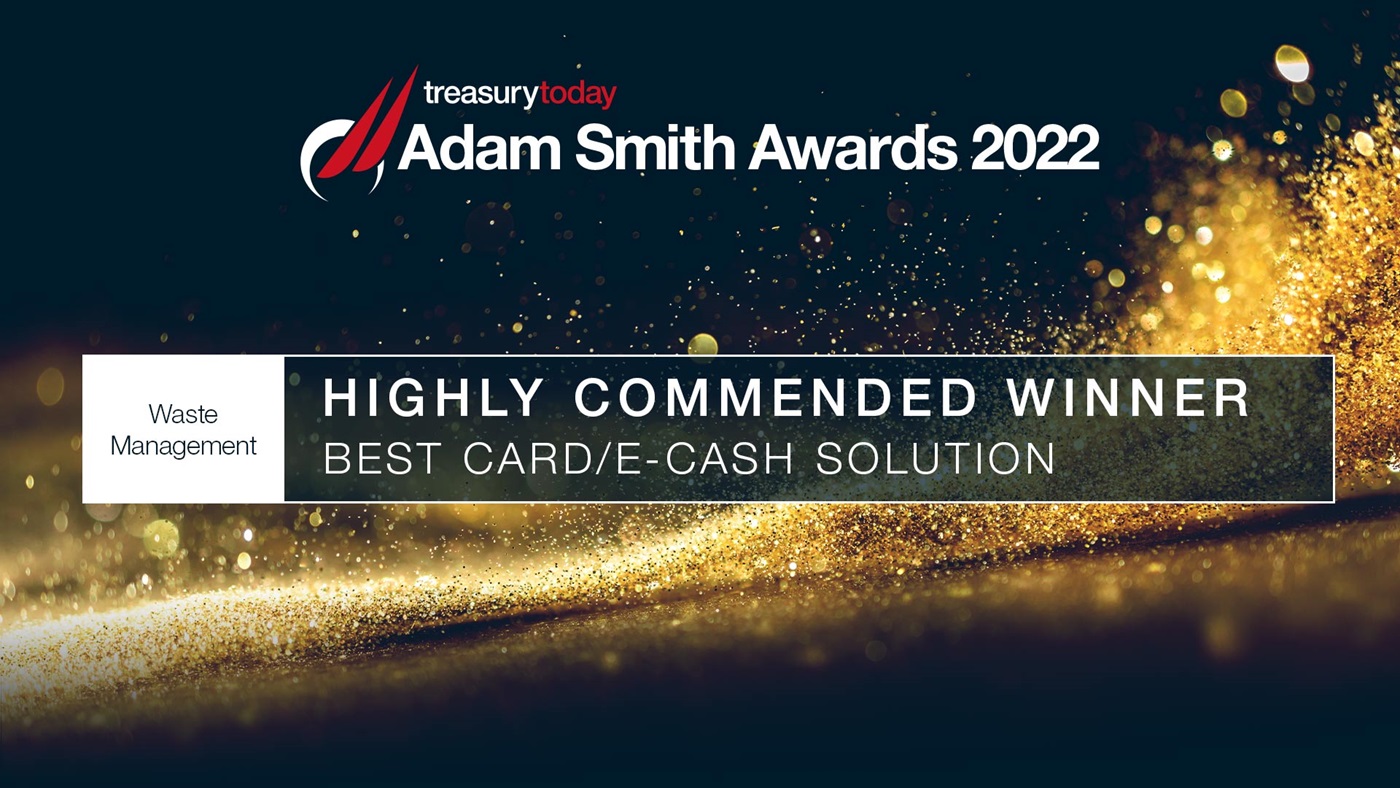
Jared Mills
Director – Treasury Operations
Waste Management
Waste Management (WM) provides comprehensive waste and environmental services to residential and commercial customers in North America to support internal and external customer sustainability and resiliency goals.
in partnership with

Card solution keeps WM’s trucks running and customers satisfied
The challenge
A primary treasury goal was maximising working capital and optimising cash flow. A comprehensive commercial card programme, consisting of virtual cards, purchasing card (P-Card), central travel card and travel and expense (T&E) card programmes in both US and Canada, was key in supporting these goals by delivering days payable outstanding (DPO) extension and rebate.
Waste Management (WM) initiated a project in 2019 to transition to a new ERP system by 1st January 2022. Much of the pre-work and foundation was built in 2020. However, in 2021 WM identified that its existing commercial card programme was significantly impacted by system limitations of the new ERP and use of a new general ledger (GL) structure. WM’s programme has complex technical integration for reconciliation of thousands of virtual card transactions which the new ERP did not easily accommodate. Additionally, WM leverages issuer technology for GL coding and reconciliation file generation for P-Card transactions which had to be redesigned to accommodate both GL structures. WM’s card services team was tasked with simultaneously maintaining business as usual processes and growth initiatives for the commercial card programme operating in their existing ERP system, while evaluating, improving, and redesigning commercial card processes for their new ERP.
The team was also tasked with expanding the commercial card programme to a newly acquired company. This project entailed expanding T&E cards to new employees, introduction to T&E policies and procedures and expense report training; closing their existing P-Card programme and transitioning to the WM P-Card programme; and working with supply chain and area finance to transition suppliers to either virtual cards or P-Cards.
The solution
Through intensive Covid-imposed virtual collaboration with other internal ERP migration teams, WM’s ERP migration consultant and their bank, implementation, and technical team throughout the year, WM’s team successfully met its go-live deadline and migration objectives. The team has seamlessly transitioned to the new ERP, developed the strategy and solutions to ensure business continuity in both ERP systems simultaneously until the former ERP is phased-out, solved reconciliation processes by incorporating software to mitigate limitations of the new ERP and evaluated over 8,000 P-Card suppliers for transition to virtual cards with extended terms and successfully transitioned 1,836.
The team has also implemented a solution for dual GL coding for P-Card, built automated sales tax capture and GL allocation for remaining P-Card programmes, expanded programme to its new acquisition and maintained focus on continuous supplier recruitment for virtual card and redeployed staff to more strategic, value-added functions. The programme achieved 25% virtual card growth as part of its 13% overall programme growth resulting in a significantly increased rebate.
Best practice and innovation
WM adopted an ‘Opt-Out’ strategy instead of an outbound campaign to transition over 1,800 suppliers from P-Card to virtual card. WM’s team evaluated 8,000+ P-Card suppliers for transition to virtual card, eliminated 5,000+ non-transaction or one-time purchase suppliers, collected information for target suppliers, unilaterally changed the payment method to virtual card and experienced little to no attrition from the virtual card programme.
WM adopted a source-to-pay platform, encouraging existing/new suppliers to register in the portal. Virtual card is offered as the preferred supplier payment method and 500+ additional virtual card suppliers have been added.
Key benefits
- Cost savings.
- Process efficiencies.
- Increased automation.
- Risk mitigated.
- Manual intervention reduced.
- Increased system connectivity.
- Exceptional implementation (budget/time).
“In the final analysis, the efforts of transformation have been critically important for the smooth operation of the business, which ultimately keeps the trucks running and customers satisfied,” concludes Jared Mills, Director – Treasury Operations.